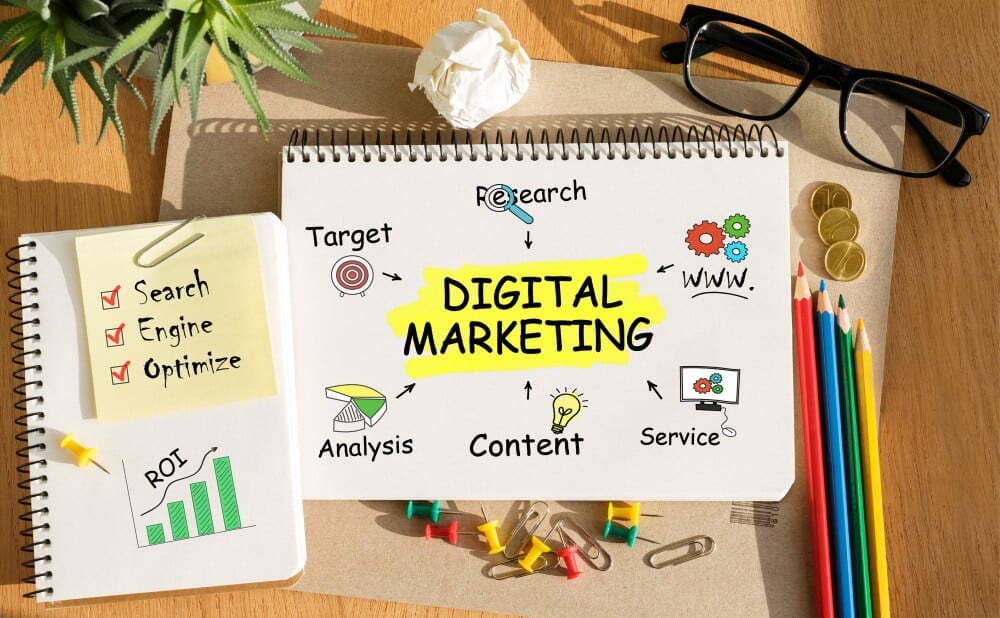AI Art and Its Impact on Digital Marketing

Table of Contents
- AI Art and Its Impact on Digital Marketing
- The Rise of AI Art
- Impact on Digital Marketing
- Captivating Visual Content
- Enhanced Branding
- Personalised Visuals
- Cost-Efficiency
- Creative Collaboration
- Expanding Creative Boundaries
- Challenges and Considerations
- Originality and Plagiarism
- Ethical Use of AI
- Maintaining Human Creativity
- Conclusion: AI Art as a New Frontier in Digital Marketing
AI Art and Its Impact on Digital Marketing
Artificial Intelligence (AI) has rapidly expanded beyond data analysis and automation, stepping into the creative arena, particularly with AI-generated art. This technology is reshaping the digital landscape by blending human creativity with machine learning. In this article, we explore the role of AI art in digital marketing and its potential to revolutionise branding, content creation, and user engagement.
The Rise of AI Art
AI art is created using machine learning algorithms that can generate visual content ranging from illustrations and photographs to complex designs. By analysing vast datasets of existing artwork, these algorithms can produce new, original pieces that challenge our traditional ideas of creativity. Artists and marketers alike are embracing AI art for its unique ability to combine cutting-edge technology with innovative aesthetics, creating visually compelling content that captivates audiences.
Impact on Digital Marketing
Captivating Visual Content
In a crowded digital marketplace, where grabbing and retaining users' attention is a constant challenge, AI art offers a distinctive solution. AI-generated visuals have a fresh, unconventional quality that can break through the clutter and grab attention. Whether through engaging graphics, striking animations, or creative illustrations, AI art can make your marketing campaigns stand out, offering a unique way to connect with audiences. This ability to generate attention-grabbing visuals is invaluable for businesses looking to enhance their visual content marketing strategies.
Enhanced Branding
Brand identity is built on distinctiveness and emotional connection. AI art allows businesses to showcase their innovative and forward-thinking approach, helping them stand out in a competitive market. Incorporating AI-generated visuals into branding signals that your business is not only tech-savvy but also pushing the boundaries of creativity. This helps convey an image of modernity, innovation, and boldness, appealing to audiences who appreciate brands that embrace new technologies.
Personalised Visuals
Personalisation is key to effective marketing, and AI enables a new level of tailored visual content. AI algorithms can analyse user data, such as browsing history, preferences, and behaviours, to create personalised visuals that resonate with individual users. For example, AI can generate customised product recommendations or images based on a user's past interactions with a brand. This level of personalisation increases engagement and conversion rates, as customers feel the content is more relevant to their needs and interests.
Cost-Efficiency
Creating high-quality visual content—whether through professional photography, graphic design, or illustrations—can be both time-consuming and expensive. AI art offers a cost-effective alternative that doesn’t compromise on quality or creativity. AI tools can generate stunning visuals in a fraction of the time, allowing businesses to produce a steady stream of unique content without breaking the bank. This efficiency is particularly beneficial for small and medium-sized enterprises (SMEs), which may have limited resources but still need compelling visuals to compete effectively in digital marketing.
Creative Collaboration
AI art is opening doors to creative collaborations between brands and AI artists. These partnerships push the boundaries of both technology and creativity, resulting in innovative marketing campaigns that capture public interest. Collaborating with AI artists not only highlights a brand’s willingness to embrace cutting-edge technology but also showcases its commitment to creativity and forward-thinking innovation.
Expanding Creative Boundaries
AI art continuously expands the boundaries of what is possible in visual content creation. By incorporating AI-generated visuals into your marketing strategy, your brand can position itself as a pioneer and innovator. This kind of forward-thinking approach captivates audiences, showcasing your brand as one that leads rather than follows, and pushing the envelope in creative digital marketing.
Challenges and Considerations
Originality and Plagiarism
One key concern with AI art is originality. AI-generated visuals are based on existing data, which raises questions about their uniqueness. It’s important for brands to ensure that the artwork they use is genuinely original and not too derivative of existing works to avoid issues with plagiarism. Verifying the originality of AI-generated art helps maintain brand integrity and builds trust with consumers.
Ethical Use of AI
The ethical use of AI in art and marketing is a growing concern. Brands need to be aware of issues such as data privacy, transparency in AI-generated content, and the potential for AI to be used unethically. For instance, using AI to create content based on user data must be handled responsibly, ensuring that consent is obtained, and privacy is respected. Brands that prioritise ethical considerations when using AI art can strengthen their relationship with consumers by demonstrating transparency and a commitment to responsible technology use.
Maintaining Human Creativity
AI can be a powerful tool for generating content, but it’s important to remember that it should complement human creativity, not replace it. While AI art can produce striking visuals, it lacks the emotional nuance and intuition that human creativity brings. Successful marketing campaigns will balance AI-generated content with human input to ensure the emotional depth and relatability that audiences crave.
Conclusion: AI Art as a New Frontier in Digital Marketing
AI art is rapidly emerging as a valuable tool in digital marketing, offering businesses the opportunity to create distinctive, captivating, and personalised visual content. By integrating AI-generated visuals into branding and marketing campaigns, businesses can position themselves as innovative leaders in their industries, while also benefiting from the cost-efficiency and creative possibilities that AI provides.
However, brands must navigate the challenges of originality, ethical use, and maintaining a balance between AI and human creativity. When applied thoughtfully, AI art can be a game-changer for businesses looking to enhance their digital marketing strategies, offering a new frontier of visual creativity that is both cutting-edge and highly engaging.

Adam Peel
Digital Marketing Expert at CDM Marketing Ltd
Adam specializes in digital marketing strategies for businesses of all sizes, with expertise in SEO, content marketing, and social media management.
